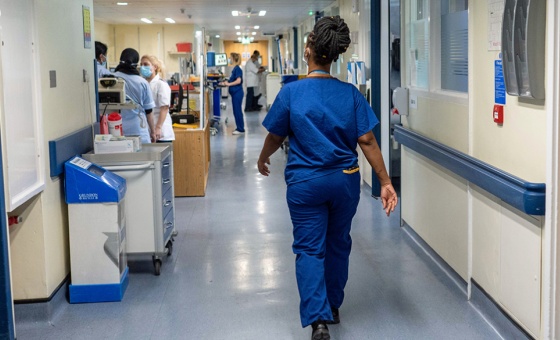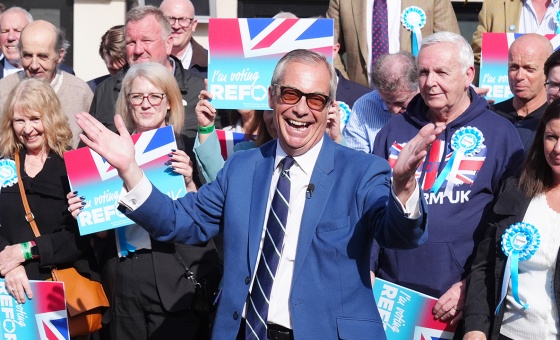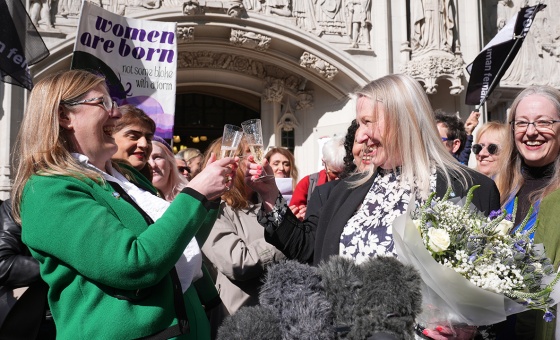This is the last article you can read this month
You can read 5 more article this month
You can read 5 more articles this month
Sorry your limit is up for this month
Please help support the Morning Star by subscribing here
MARCH 1, the day of the Labour Party’s two-hour special “rule changes” conference, will soon be with us.
The outcome may be of watershed importance to the labour movement.
Ed Miliband’s national executive committee-backed proposition to the conference is just to say “yes” or “no” to the reform proposals included in the Collins report — preferably “yes,” and very publicly.
Enough “yes” votes and it is anticipated that the voting strength of the affiliated trade unions at party conferences will take a big hit in future, aside from the immediate consequence of removing automatic affiliation from their members.
Enough “no” votes will tell the Labour leadership to think again.
So will those seeking to rescue the party from the big business-loving wretchedness of the new Labour project be knocked backwards, or make progress?
Glance back 20 years to the spring of 1994. John Smith was Labour Party leader then, though his sudden death on May 10 from a heart attack was not far off.
Smith, though on the party’s right, was not a convinced “moderniser” in the manner of Gordon Brown and Tony Blair.
He preferred not to empathise wholly with big business and its media secretariat — unlike his predecessor Neil Kinnock, a pioneer of the new Labour approach.
But the “modernisers” had gained ground since Kinnock’s resignation after the April 1992 election, when Labour’s vote had gone up 3.5 points to 35 per cent, scoring around 11.5 million votes to the Tories’ 14 million-plus.
That election had not been contested on a left-wing platform.
Paul Foot noted in his excellent final book The Vote: “Right up to the 1992 election, when he could not coherently answer a question from Jonathan Dimbleby on secondary picketing — he was not in favour, but then not against — Kinnock backed down from his opposition to the anti-union laws.
“The same impression — that in the new political mood set by Thatcher, Labour was ditching its commitments to trade unions — emerged from Labour’s attitude to almost everything else.
“Kinnock himself made clear that he was no longer committed to unilateral nuclear disarmament or to opposing the European Common Market. The same was true of privatisation.”
The direction was clear. Tony Benn records in his diary for a Labour NEC meeting in July 1992 the “very sarcastic” remark from Dennis Skinner: “What about the beautiful people? Aren’t they going to be allowed on the platform?
“Tony Blair, surely, because he’s after John Smith’s job.”
Smith had been elected leader with overwhelming support, but in the shadow cabinet elections Brown came first and Blair second.
Brown became shadow chancellor and Blair shadow home secretary. “The modernisers had won everything but the leadership,” wrote John Rentoul in a sycophantic early biography of Blair.
Meanwhile huge numbers of Britons were facing grimmer times as the 1992 party conference approached.
Unemployment was creeping back towards three million, car workers were on short-time, interest rates were rising and property prices were falling.
In mid-September Tory chancellor Norman Lamont was forced to take Britain out of the European exchange rate mechanism (ERM), to which Brown had misguidedly tied himself just as closely as Lamont.
In these circumstances the Blackpool conference was held, as was an NEC vote which, wrote Benn, meant “the disappearance of the working class from the Labour Party.
“There’s not a single working-class man or woman left on the constituency section, except possibly John Prescott.”
Skinner was voted off, though Benn survived for the moment.
Weeks later the Tories announced the closure of two-thirds of the remaining mines in the country, but this was not a development that troubled the “modernisers.”
In January 1993 Blair and Brown visited Washington, where they sucked in guidance on being “market-oriented” from Larry Summers, depicted more recently by investigative journalist Greg Palast in this newspaper as the “typhoid Mary of economics.”
The same month Jack Straw — “just a little sort of weathercock blowing with every wind,” to quote Benn — met Smith to discuss his pamphlet proposing the “reformulation” of Clause IV of the party constitution, the one committing it to “common ownership of the means of production, distribution and exchange.”
Smith was angrily opposed — but he came down in favour of abandoning any commitment to renationalising industries privatised by the Tories.
In July a Brown speech publicly rejected the 1992 manifesto, announced that Labour was not against wealth and that it would jettison the commitment to levy a 50 per cent inheritance tax.
A conference-floor rebellion in September caused Brown to change his tune, demanding higher taxes on the wealthy before speedily back-tracking from his back-tracking.
Prescott promised the renationalisation of the railways, to a standing ovation.
This was another conference kite soon to strike the ground.
The party’s left wing received a battering. Benn was voted off the NEC after 31 years while a concerted attempt by Blair and Brown, with reluctant backing from Smith, to curb trade unions’ voting influence was only just defeated.
The “modernising” tide appeared uninterested in examining what was going on in the world, its causes or likely outcomes.
As Eric Hobsbawm notes in Age of Extremes, “between 1990 and 1993 few attempts were made to deny that even the capitalist world was in depression.
“Nobody claimed to know what to do about it, other than to hope it would pass... capitalism’s operations had become uncontrollable.
“Government policy, national or internationally co-ordinated, no longer worked.
“Most politicians, economists and businessmen failed to recognise the permanence of the shift.”
By February 1994 Benn was writing that “Brown, Robin Cook and somebody else have come out with the idea of bringing private capital into the public service — health and education.”
Gradually Smith’s Labour instincts were being overtaken by borrowing more and more Tory clothes and peddling Tory policies as if there were no alternative.
If we look at events since John Smith’s death enabled the new Labour project to flower fully and before long Clause IV was ditched.
Leaders Blair and Brown would not seek to reverse Thatcher and Major’s policies but presented their own variants as if they were radical.
No renationalisation. More privatisation — much more. The new Labour flower exuded poison.
At the May 1997 election 13.5 million voted Labour, an increase of almost two million on 1992.
How much of that vote was due to new Labour, and how much to accumulated disenchantment with the Tories?
Did Labour voters really want more privatisation, more deindustrialisation, more dependence on the finance sector?
Four years later in 2001 Labour’s vote dropped like a stone, while voter turnout fell from 71.5 per cent to just over 59 per cent, the lowest since 1918.
Less than a quarter of those registered to vote backed Labour. The party’s Commons majority stayed comfortable but great swathes of people were expressing discomfort.
Whatever the positives of Labour governments between 1997 and 2010, their wrists and ankles were — voluntarily — tightly bound by an open alliance with unfettered finance capitalism, underpinned by European Union membership, and with US administrations itching to extend their global reach.
New Labour appeared happily indifferent to the wild workings of capitalism, with its inherent compulsion to drive labour costs down and to increase unemployment so that individual concerns could seek higher rates of profit, which in recent years are more available in the finance sector than in industry.
The banking and property crash of 2008 was the natural outcome of capitalism’s unchecked global operations.
Since 1994 we have had no end of a lesson.
But in 2014 where is the Labour Party headed?
Unless its leaders insist on whole-hearted partnership with the trade unions and develop a fearless challenge to the deep-pocketed “wizards” in the City of London and their media cronies, will the British people be offered change?
It is time for turning — unhesitatingly and boldly — leftwards.








